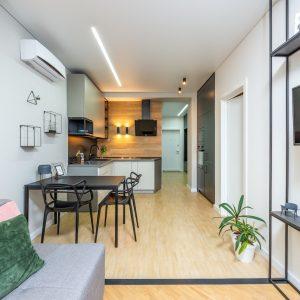Keeping your home comfortable is important, and so is sustainability. Taking an eco-friendly approach to heating and cooling your home not only minimizes your impact on the environment but also reduces your utility costs. With the cost of living on an upward trajectory, every little bit helps.
Whether your goal is to stay cool, calm and collected, or warm and cozy, here are seven sustainable home heating and cooling tips to help.
Know when to upgrade your systems
Replacing one of your home’s major systems like the air conditioning or the furnace is a big decision. While the upfront costs are substantial, the replacement will often pay for itself in monthly utility savings. Consider the fact that the top-of-the-line air conditioning unit from 15 years ago was created without the technology that’s in place today. Upgrading could mean more output with less energy consumption.
According to experts in AC replacement in Carrollton, if your air conditioner is over ten years old and requires frequent service visits, it may be time for an upgrade. Similarly, if your furnace is 15 years or older, it’s time to seriously consider an upgrade. Aging furnaces, in particular, can become a safety issue as well as a money pit.
Schedule annual maintenance visits
Like any form of machinery, HVAC systems need some TLC to continue working properly. While there are several small steps you can take to improve your heating and cooling systems’ efficiency— cleaning filters, for one— it’s also worth scheduling annual maintenance visits. Plan for an air conditioning tune-up in the early spring and a furnace tune-up in the early fall.
During these visits, a technician will inspect everything in your heating and cooling system, making repairs and adjustments as they go. This visit also includes things like tightening loose connections, removing accumulated grime, and making sure you won’t experience a system failure on the first hot or cold day of the year. In essence, your systems won’t have to work as hard to overcome incompetency while trying to regulate the temperature of your home, using less power.
These annual tune-up visits also reduce wear and tear on your systems, maximizing their lifespan and minimizing waste.
Optimize your landscaping
If sustainability and eco-consciousness are important to you, you’ll be pleased to discover that your landscaping efforts can also impact your home’s energy consumption.
The concept behind energy-efficient landscaping is to design your yard to work with the elements, creating a micro-climate around your home. This approach includes knowing where to implement wind blocks during the winter and how to block the sun while creating cool air drafts during the summer.
For example, in a cool or temperate region, you might plant large deciduous trees to the south and west of your home. This will block the sun and create shade during the summer months, so your home cooling system doesn’t have to work as hard. As deciduous leaves fall in the autumn, the trees will block cold winter winds while the bare branches allow the winter sun to shine through.
Use thermal curtains
Thermal curtains are a simple, affordable solution that can help you dramatically cut back on your energy consumption. During the summer months, thermal curtains block the sun and ease the burden on your cooling system. These curtains block the natural heat loss from windows during the winter months, especially at night. It’s estimated that single-glaze windows lose 10-20 times as much heat as a well-insulated wall.
You can get aesthetically pleasing thermal curtains from Amazon or any department store. If you can’t find a color or design that suits your style, you can easily affix thermal curtains to the back of your designer panels.
Use textiles
In addition to using thermal curtains, you can also use strategically-placed textiles throughout your home. A thick area rug will add insulation to the hardwood and tile floor, helping retain indoor heat during the winter months. Adding a few throw blankets and warm pillows to couches and beds will also make a big impact without requiring any adjustment to the thermostat.
During the summer months, swap out your thick fabrics with natural, breathable materials like cotton and linen.
Use localized climate control
If you have a centralized home heating or cooling system, adjusting the thermostat means altering the temperature throughout the home. One of the reasons heat pumps and mini splits have become so popular is that you can better control the temperature in one room.
Consider closing the doors to unused rooms to better control the flow of air in your home, and use fans and space heaters in high-traffic areas.
Use a smart thermostat
If you haven’t already upgraded to a smart thermostat, now is the time. These devices allow you to program the temperature to adjust based on your schedule. In other words, your heating or cooling won’t really kick in until you’re home from work or awake for the day.
These small temperature adjustments can drastically reduce your consumption, waste, and power bill.
Keep these sustainable home heating and cooling tips in mind to make your home more affordable, comfortable, and eco-friendly.




